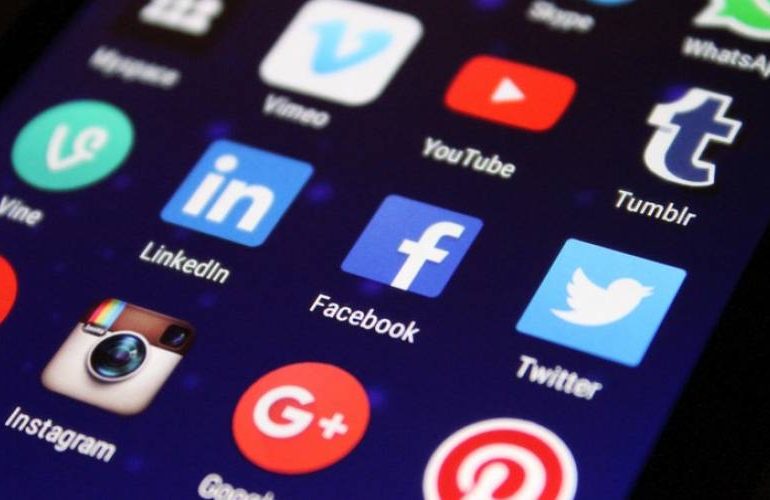By Frank Landman
If there’s one niche of the business world that never stops evolving, it’s marketing. Digital marketing is highly dependent on the maturation of online technologies and is continuously pivoting and responding to new developments. Having said that, are you prepared for 2021?
The Digital Marketing Trends Set to Define 2021
Now is the time to begin planning ahead to account for the digital marketing trends of 2021. By staying current, you can develop a digital marketing strategy that takes the latest tips, trends, and frameworks into account.
“A good digital marketing strategy gives your company a cohesive plan that is consistent through your many online and offline channels,” Marcel Digital explains. “After all, you want your branding and message to be the same on your point-of-purchase advertising in your stores as it is on your social media pages and website. A cohesive message saves time and effort by not having employees recreate a marketing message for every channel.”
But our focus is not to discuss how to create a cohesive message. While important, we want to dig into the how. In other words, how do you execute once you’ve zeroed in on your message?
Though classic marketing principles and approaches will always prove effective, sometimes it’s helpful to study the latest trends to get a feel for innovative opportunities that can take marketing to the next level. And in this article, we want to focus on a few of the top trends for 2021. Take a look:
1. Live Video
Live video streaming has exploded over the past three years (and will continue to do so over the next decade). Powered by social media platforms, live streaming is available to the masses and provides an avenue for the continued democratization of content. Just consider the following data points as curated by HubSpot:
- Internet users watched approximately 1.1 billion hours of live video in 2019.
- By 2027, the live video streaming market is expected to hit $184.3 billion.
- By 2020, live streaming is expected to account for 82% of all internet traffic.
Those are significant numbers – too significant to ignore. And there are plenty of reasons why businesses are making the jump to live video, including:
- There’s almost no learning curve to record live video. There’s no need for a script, props, or post production. You hit the record button and push out live content. It’s casual, relaxed, and relatable.
- There’s no requirement for advanced technology. While you can certainly enhance quality with some tech upgrades, a smartphone is all that’s needed to get started.
- Live video feels exclusive and commands longer average view times when compared to pre-recorded videos. (There’s a sense of urgency from the viewer that they might not be able to see the content later.)
Live streaming video is used in a variety of capacities and is highly dependent on your brand, goals, and content strategy. However, it’s ideal for things like Q&As with an audience, customer support, special announcements, interviews with influencers, live events, and backstage events.
If you’re new to live video but want to get started, the best piece of advice is to jump in and do it. Try a couple of videos and see what happens. Were you comfortable? Did you enjoy it? Did the audience engage? What can you learn?
Your first shot at live streaming won’t be perfect, but you can always optimize over time.
2. Programmatic Advertising
Another sweeping trend is the growth of programmatic advertising. If paid traffic is part of your strategy for 2021, you need to gain some understanding and proficiency in this area.
As MarTech Advisor explains, “Programmatic advertising is the process of automating the buying and selling of ad inventory in real-time through an automated bidding system. Programmatic advertising enables brands or agencies to purchase ad impressions on publisher sites or apps within milliseconds through a sophisticated ecosystem.”
Over the past couple of years, programmatic advertising has become the preferred method of running ad campaigns. It offers real-time insights, enhanced targeting capabilities, increased transparency, better budget utilization, and provides a way to combat ad fraud effectively.
Programmatic advertising can be deployed in a variety of channels and formats, including display ads, video ads, social ads, audio ads, native ads, and digital out-of-home (DOOH) ads.
Contrary to how traditional media buying works, programmatic advertising doesn’t usually involve publishers and advertising working together in a one-to-one fashion. The type of programmatic deal – such as real-time bidding, private marketplaces, preferred deals, or programmatic guaranteed – determines how they’re delivered.
3. Voice Search
Would it surprise you to learn that approximately 27 percent of the online global population uses voice search on mobile? Or that more than 1 in 3 US internet users use a voice assistant monthly (up from just 9.5 percent in 2018).
Consider that by the end of 2020, roughly 30 percent of all internet browsing sessions will include voice search. And that more than half of adults use voice search on a semi-regular basis.
The writing is on the wall. Voice search will soon become the preferred method of browsing the internet. It’s faster, hands-free, and ultimately more convenient.
So what does that mean for digital marketing? Well, it changes everything, particularly on the content strategy side of things. People speak differently than they write. Consider, for example, someone searching for a pizza restaurant. Their queries might look like this:
Typed: pizza restaurant Bronx
Spoken: What’s the best pizza restaurant in the Bronx?
Voice search is ushering in a new age of SEO and content creation where long-tail keywords are the focus. Natural, conversational language wins the day. Brands that adapt to this style will see their SEO rankings improve and search traffic scale.
In terms of blogging strategy, brands should focus on developing content that answers questions. People go to Google when they have a question and the search engine knows this. So in an effort to satisfy their users, they’re elevating content that answers very specific questions.
4. Interactive Content
Online users are growing bored with basic blog posts and static content. They want to be stimulated. They also want control over their experiences. And these desires are currently culminating in the rise of interactive content.
Research shows that interactive content gains 2X more engagement than static content. This has led 34 percent of marketers to include interactive content in at least 10 percent of their strategies.
The most popular types of interactive content include quizzes, polls, interactive infographics, AR, VR, and online calculators.
Interactive content is typically just a subsegment of the larger content strategy. But in 2021 and beyond, it’s going to become an even bigger portion. While many brands are currently developing one piece of interactive content for every nine pieces of static content, that number will likely increase to 20 percent.
5. Shifts in Influencer Marketing
In 2016, the influencer marketing industry was worth an estimated $1.7 billion. By the end of this year, it’s projected to be worth somewhere north of $9.7 billion.
People like to hate on influencers, but they’re effective. The earned media value for money spent on influencer marketing was roughly $18 for every dollar spent in 2019. And over the last three years, there’s been a 1500% increase in brands searching for “influencer marketing” on Google. In other words, it’s effective and here to stay. But as we enter into 2021, this industry will undergo significant shifts that will ultimately change the way businesses approach marketing and advertising.
One of the biggest shifts will be the rise in micro influencers. These are influencers who have small yet loyal followings (anything less than 10,000 followers). And what they lack in reach (compared to large influencers), they make up for with high engagement and affordability.
It’s also possible that we’ll see an increase in performance-based influencer marketing. In the past, it’s always been sort of a flat fee deal. Businesses pay per post and the influencer gets the same amount of money no matter what happens on the engagement front. But as the influencer arena gets more competitive, brands will gain more leverage. Soon, we could see payment based on the number of clicks, comments, or even sales.
Ultimately, the changes in this space will be dictated by consumers. Followers make it clear what they do and don’t respond to by the type of engagement they offer. As brands and influencers gather more data and analytics from these types of posts, they’ll iterate and zero in on what works best.
Hit the Refresh Button on Your Digital Marketing
No digital marketing strategy is set in stone. As you approach 2021, take the time to understand the new trends so that you can shift your strategy into a direction that aligns with the trajectory of the larger consumer marketplace. Whether it’s live video, programmatic advertising, voice search, interactive content, or shifts in influencer marketing, there’s ample opportunity for growth and expansion.
Frank is a freelance journalist who has worked in various editorial capacities for over 10 years. He covers trends in technology as they relate to business.




